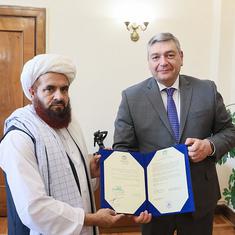Reading list: Seven articles that examine Assam’s National Register of Citizens
At midnight on Sunday, the state government released its first draft of the list.

At midnight on December 31, on the cusp of the new year, Assam released the first, “partial” draft of the National Register of Citizens. Meant to be a roster of all the “genuine” Indian citizens living in Assam, the register is being updated for the first time since 1951, soon after the massive population exchange that the Partition entailed. One of the new list’s stated objectives is to weed out “illegal Bangladeshi immigrants” from Assam.
Going by the terms of the Assam Accord of 1985, those who can prove that they or their ancestors entered the state from outside the country before midnight, March 24, 1971, will be considered a citizen. On March 25, 1971, the Pakistani Army had started operations in Dhaka, marking the start of the Bangladesh War.
More than 68 lakh families, covering over 3.5 crore names, had applied to be included in the register. The first draft contains nearly two crore names verified so far. The Supreme Court is directly monitoring the massive counting exercise.
Two pilot NRC centres had to be shut down after protests in 2010. The updating exercise started in earnest in 2015. As the date for the publication of the contentious first draft approached, security was stepped up, with central forces being moved into parts of the state and the Army put on standby.
Here are seven articles that cover the National Register of Citizens and the problems surrounding it.
- Non-citizens of Assam: As the assembly elections of 2016 approached, the fraught question of illegal immigrants was back: Then Chief Minister Tarun Gogoi revived the debate by saying that people who were on the electoral rolls in 2014 should be eligible for citizenship.
- Assam’s search for its ‘original inhabitants’ returns a key question: Who is Assamese, anyway?: The state is caught in layers of indigeneity as it updates the National Register of Citizens to weed out illegal Bangladeshis.
- How the fear of migrants became the driving force of politics in Assam: Still an explosive poll issue, fears about migration hark back to colonial times.
- Guwahati High Court ruling on citizenship document will hurt women the hardest: More than 50 lakh women have submitted Panchayat secretary-issued residency certificates as part of the process to prove that they are Indian.
- These four women are a testimony to the trials and tribulations of proving citizenship in Assam: On November 22, 2017, Supreme Court was to decide if panchayat certificates have ‘statutory sanctity’.
- In Assam, the National Register of Citizens sparks fresh fears among the state’s minorities: A tricky question has surfaced again: who is an ‘original inhabitant’ of the state?
- ‘Our NRC, Fair NRC’: In Assam, a media campaign aims to quell fears about the new citizens’ register: The question of who could be classified as an original inhabitant had becoming a lightning rod for communal tension.









